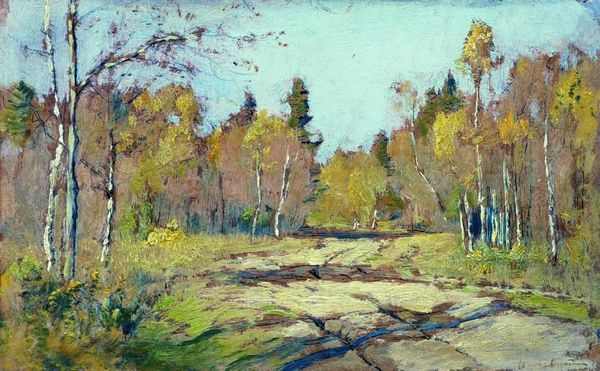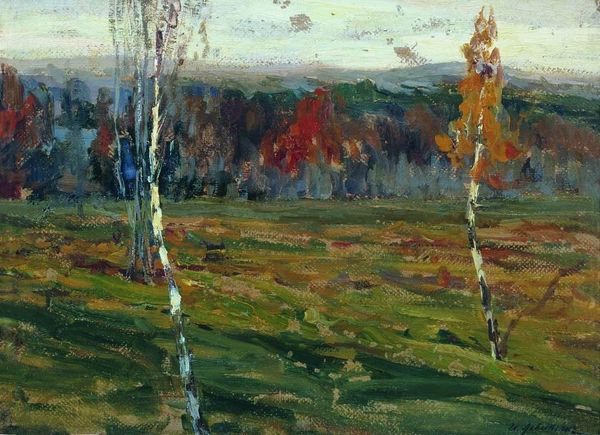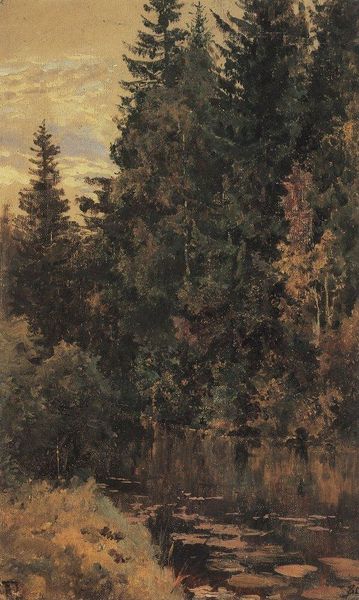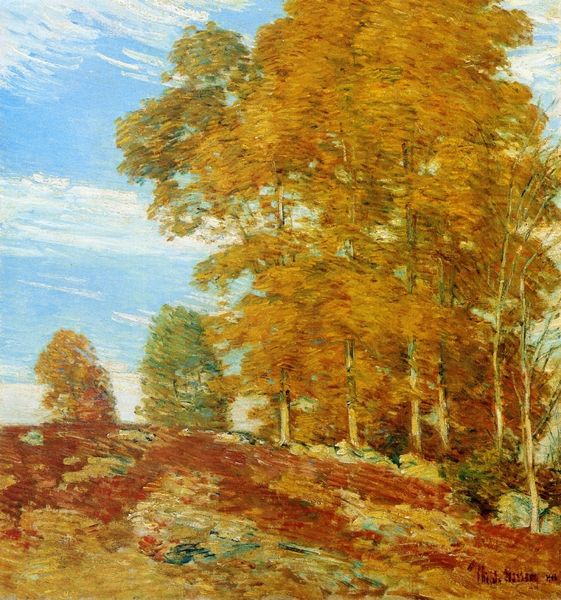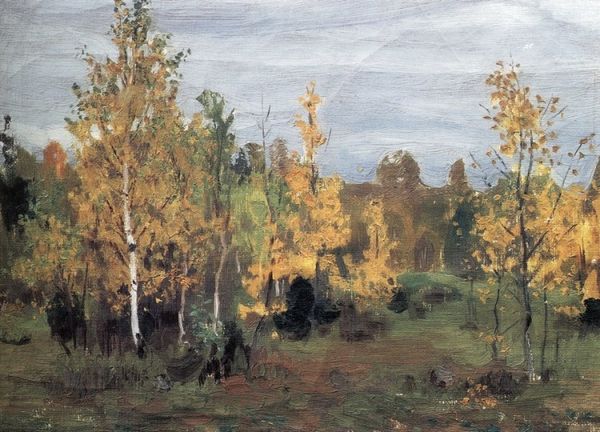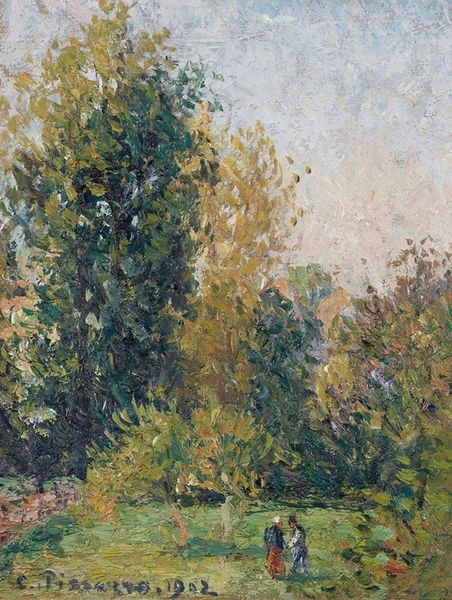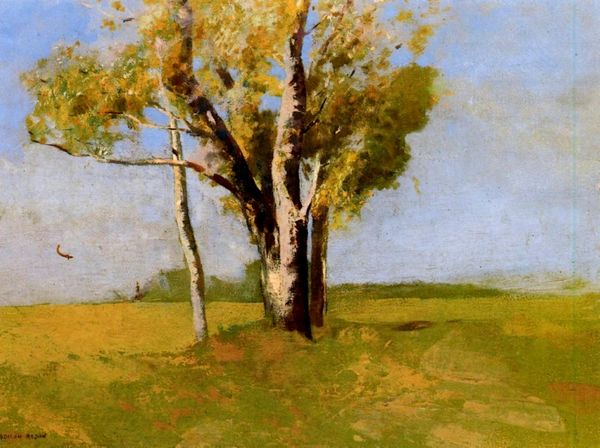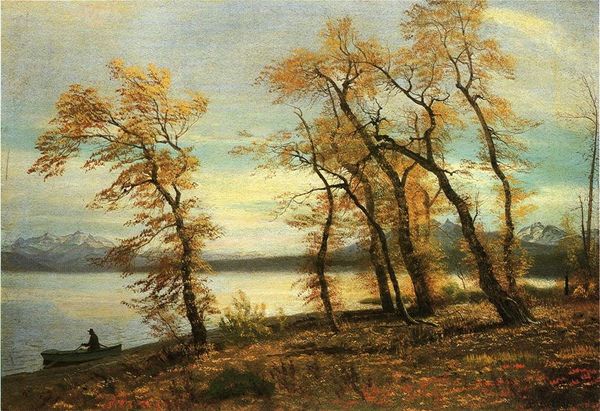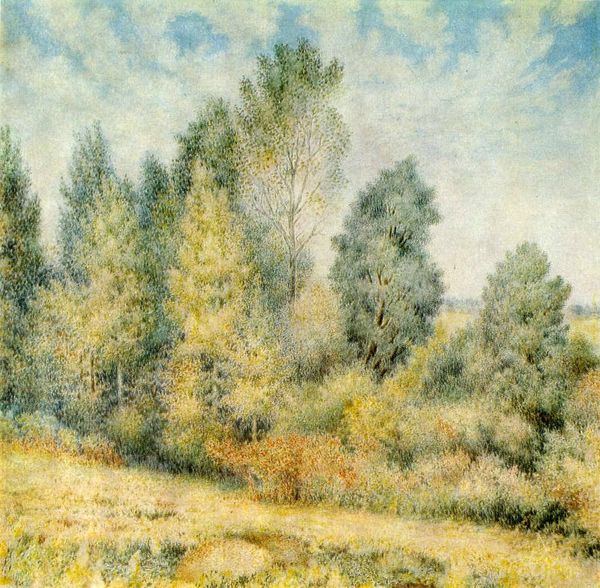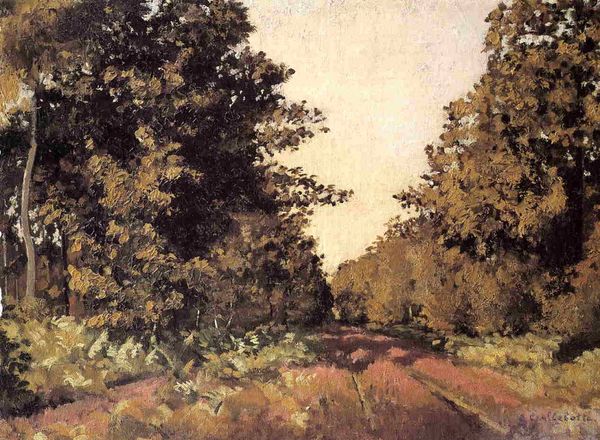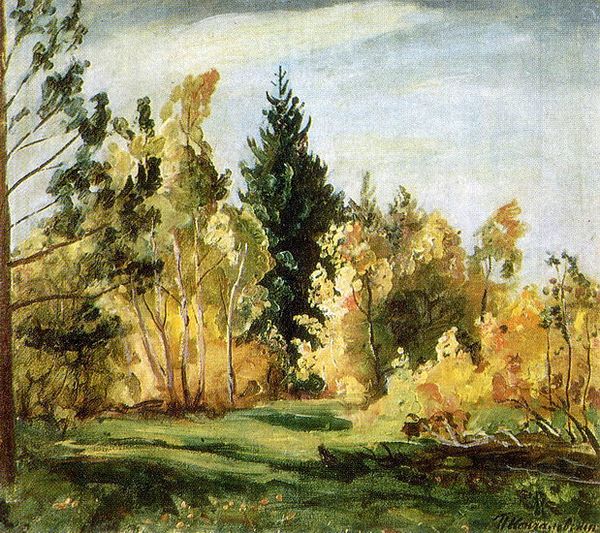
Copyright: Public domain
Curator: Looking at Isaac Levitan's oil painting "Autumn," created in 1891, the first impression is one of melancholic tranquility. The brushstrokes are soft, almost blurring the details. Editor: Yes, there's a stillness. The light feels muted, subdued, typical of how Russian art expresses mood and the landscape's significance within its socio-cultural understanding. Is it intentionally meant to be sad? Curator: Levitan captures a familiar yet complex feeling here, which speaks beyond time. Russian art reflects not only a socio-political mood but delves into an understanding of identity and nationhood; its artists find symbols in their local landscapes. Look at how he uses colors associated with decay, but with so much light. The birch trees in particular are recurring characters in Russia's symbolic language. Editor: The choice to depict birch is powerful, it symbolizes purity but can also symbolize mourning, and of course, the obvious point about birches in Russian art is how it symbolizes Russia. His restrained impressionistic technique lends the piece accessibility, allowing it to resonate even for audiences unaware of these artistic traditions. Is it possible he’s drawing the symbolic imagery inward? Perhaps as a comment on the societal pressures being internalized? Curator: I find myself moved not only by his painting technique but by the emotional nuance embedded into a symbolic representation of autumn as well as society. Considering this painting also came at a time when a revival in religious art, iconography was gaining momentum— I think it suggests this transition reflected inner tensions within artists to understand what direction should Russian culture take. The use of nature, like what you touched on—about color being accessible is quite profound; you almost understand the emotional intention of Levitan instantly. Editor: The ability to take a landscape painting into a culturally significant exploration is fascinating. His “Autumn” becomes much more than a visual; it represents an entire era's self-reflection on nature, beauty and sorrow and a direction that society can learn to develop on— I guess the continuity makes it everlasting. Curator: Exactly, that makes this particular art worth returning to.
Comments
No comments
Be the first to comment and join the conversation on the ultimate creative platform.

